Iridium became a part of GMDSS. How will radio surveys change now?
The monopoly of Inmarsat, which has been the only provider of satellite GMDSS services since 1999, is over. In early 2020, Iridium was successfully certified by the IMO. Thus, Iridium GMDSS has become a superior alternative to Inmarsat GMDSS; it covers all GMDSS Sea Areas from A1 to A4 and offers built-in Safety Voice Service.
Iridium is a global mobile satellite communications system that covers 100% of the Earth's surface, including both poles. It provides real-time voice and data transmitting at sea, in the air, and on the ground. The system enables connection in remote areas which are not provided with traditional land-based communications, and in emergency situations.
The first-generation of Iridium's constellation was deployed in 1997-2002. The technology and most of the funding was provided by Motorola. To get 77 satellites into orbit, Iridium used rockets from the United States, Russia, and China.
Iridium NEXT and Iridium Certus
In 2017-2019, Iridium Communications Inc. launched 75 satellites of the second-generation Iridium NEXT: 66 active and 9 backup ones. They are cross-linked and located in Low-Earth Orbit (LEO) at an altitude of 780 km. New satellites were built by Thales Alenia Space and Orbital ATK and launched by Falcon-9 rockets of SpaceX.
The Iridium satellite network demonstrates an amazing level of redundancy and flexibility. Each satellite of the constellation generates 48 L-band radio beams that cover 4,700 km of the Earth's surface. All of them are moving clockwise around the Earth; their trajectories cross at the poles and create continuous satellite coverage around the planet.
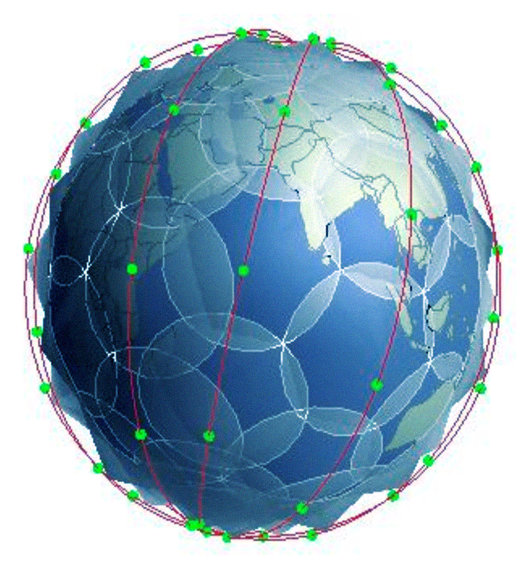
Iridium satellites on the Earth orbit. Open source image
Like the first-generation satellites, Iridium NEXT supports cross-communication between neighboring satellites using four Ka-band transceivers. Two more transceivers will provide communication with ground stations.
Based on Iridium NEXT satellites, a new technology platform Iridium Certus was developed. It offers not only communications (broadband Internet and high-quality voice service), but also a wide and constantly expanding range of services that can meet the needs of land, sea and air operations. Safety-of-life services are an essential part of the Iridium Certus network.
Recognition by IMO
Iridium began the process of getting certification to become a recognised provider of the GMDSS service in 2013. The process took four years, and in May 2018 the Iridium network was recognized to meet all the criteria required by the Maritime Safety Committee of the IMO.
In 2019, the International Mobile Satellite Organization (IMSO), which the IMO trusts as the GMDSS regulator, certified Iridium as a new satellite GMDSS provider. On December 19, Director General of IMSO officially presented a Letter of Compliance to the representative of Iridium.

Iridium GMDSS equipment
So, starting 2020, mariners get an opportunity to choose GMDSS equipment (or GMDSS ship earth station) and service providers. Now the network that covers 100% of the world's ocean surface is available. This will ensure protection regardless of the ship's location.
As we know, there are three key satellite GMDSS services:
-
Distress Alert
This feature is available on most ships today. In distress, one must press and hold the red button on his GMDSS terminal for 3 seconds; the basic critical data about the ship (its position, identification, etc.) will be sent to the Rescue Coordination Center (RCC).
-
Distress Voice
This function is also activated by holding down the red button; as a result, the distress signal is immediately passed to one of the nearest RCC. Additional details about the distress situation will be provided through the call: high priority calling, hydrographic reporting (navigational dangers), medical advice and assistance.
Up to the present time, this service was available only when using a separate terminal, and few ships had it. Moreover, the technology used in voice terminals is considered to be outdated. More advanced and expensive terminals are needed, but hardly every vessel can afford it. That's why this service is not widely used. Iridium Communications Inc. is going to change it and to make this life-saving service more cost-effective, and therefore more affordable.
-
Maritime Safety Information (MSI)
This component provides information that is automatically sent to the GMDSS terminal: navigation data, weather forecast, security-related messages, etc. It is transmitted through an Enhanced Group Call (EGC) service.
Each of the above mentioned GMDSS services requires being processed through a separate terminal or device.
For the modern maritime market Iridium offers a new innovative solution. Together with the partner company Lars Thrane, Iridium developed a new satellite terminal for Iridium GMDSS. It is intended for all SOLAS vessels and is a superior alternative to Inmarsat C, combining all three services in one truly global compact device.
Lars Thrane LT-3100S
The first Iridium GMDSS terminal Lars Thrane LT-3100S entered the market in the autumn of 2020. The terminal supports data and message transmission, as well as voice communication.
It has improved Search and Rescue (SAR) functionalities. Both Distress Alert and Safety Voice facilities can be initiated simply and quickly by pressing just one button. MSI is transmitted via Iridium SafetyCast service (EGC system is used).
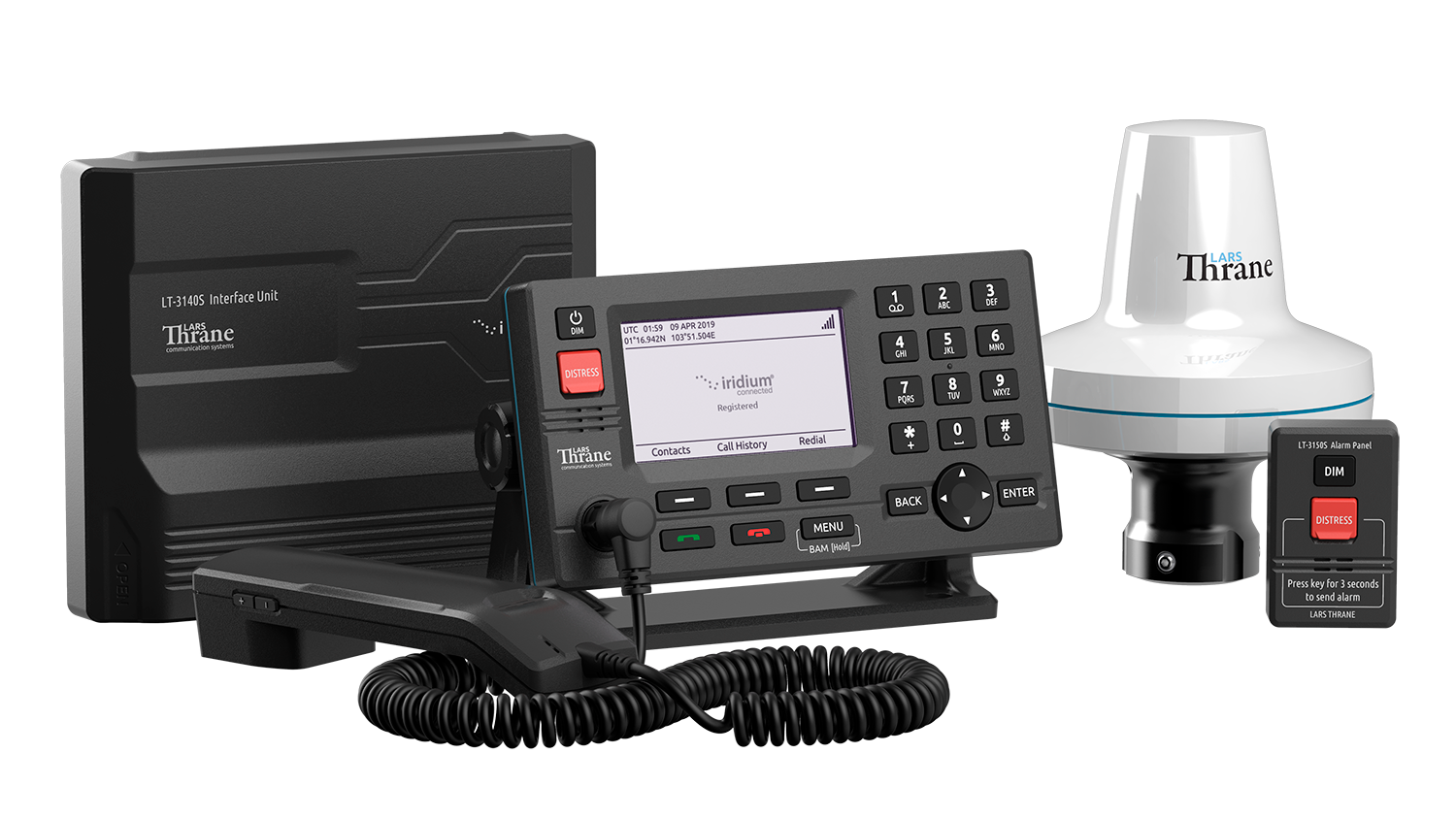
Iridium GMDSS terminal Lars Thrane LT-3100S
LT-3100S provides both normal and emergency communications. In addition to basic information, anti-piracy and ice reports may be available here. RCCs can also broadcast safety-related information through Iridium SafetyCast.
The built-in GNSS/GPS receiver of the device supports Long-Range Identification and Tracking (LRIT). The antenna unit can be installed up to 500 meters from the control unit.
Additional services like GMDSS Alarm Panels, GMDSS printer, SSAS alarm & test buttons, ECDIS, Bridge Alert Management (BAM) will require the LT-3140S Interface Unit.
LT-3100S meets the IMO new performance standards for GMDSS equipment and services, as well as the SOLAS convention vessel carriage requirements. It also complies with the criteria of the new EU Marine Equipment Directive (MED) and has received the Wheel Mark certificate.
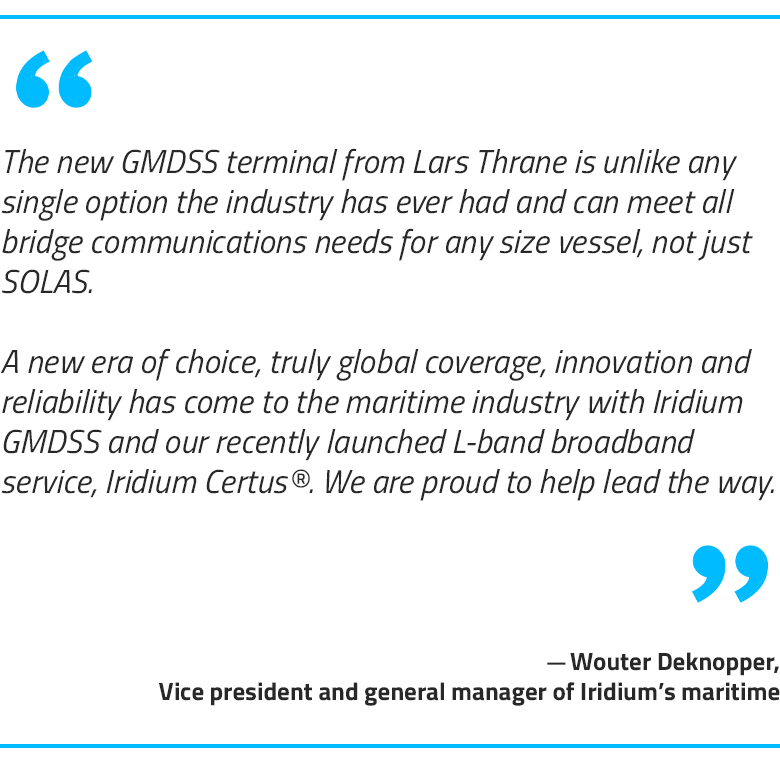
This multi-service terminal can be used as a main or a supplement communication system. The latest technologies ensure communication both on standard shipping routes and in such hard-to-get regions of the planet as the Arctic and Antarctic waters in Sea Area A4.
The Iridium 9523N transceiver used in the terminal is capable of processing both data and voice information. Iridium Certus transceivers, which allow for even greater processing speed and throughput, are also compatible with GMDSS. The company is currently working on creating supplemental below-deck hardware that can be connected directly to existing Iridium Certus maritime terminals (Cobham SAILOR 4300 and Thales VesseLINK), turning them into GMDSS terminals. It will become an Iridium standard that all its satellite terminals that support GMDSS will provide all three services.
Does Iridium GMDSS equipment need an annual GMDSS survey?
The maintenance procedures for GMDSS satellite equipment (or GMDSS ship earth stations) are regulated by the IMO and ITU recommendations and requirements.
The ITU regulations were developed based on the characteristics of the equipment of the first GMDSS satellite provider - the Inmarsat Ship Earth Station (SES) terminals (Inmarsat-C). According to these regulations, the SESs are not subject to annual GMDSS radio surveys. Only simple test procedures are required. They are described in ITU-T Recommendation M.1150 (04/97) and include commissioning and performance verification tests (PVT), the latter being an automatic method of testing space segment accessing parameters.
Commissioning tests are carried out to verify that the newly installed SES meets the technical requirements. While the station’s installation and service activation, the user must perform a Distress Call Test and a Distress Alert Test.
During a Distress Call Test, the ship earth station initiates a call to the GMDSS Gateway and a voice machine responds to the call.
Distress Alert Test is sent by the ship earth station and the Gateway returns the received test message as approved/confirmed through the MSI inbox folder.
At any time Distress Call and Distress Alert Tests can be run manually.
The ship earth station can be commissioned and used as a GMDSS terminal if both of these tests are successful. Notification of successful completion of the tests is automatically sent to all ocean regions via NCS to NCS (Network Coordinating Station) to LES (Land Earth Station) links.
The performance verification test is a fully automatic test. It is intended for checking individual SESs with respect to signal level and certain access and control sequences. Each NCS keeps a record of all PVT results conducted in its ocean region and can initiate such tests if requested by a LES or by the NCS.
According to IMO Resolution MSC.434(98) - Performance standards for a ship earth station for use in the GMDSS, the testing of the distress capability of the SES should be possible without initiating a distress alert/call.
Conclusion
As for the GMDSS survey, the introduction of Iridium GMDSS equipment is unlikely to change anything in this area. It is not subject to mandatory annual inspection. Only commissioning and performance verification tests (PVT) should be carried out.
Thus, even though the Iridium GMDSS equipment became part of the GMDSS, it did not add any work for surveyors.
By Olga Davydova and Julia Zhyvotova

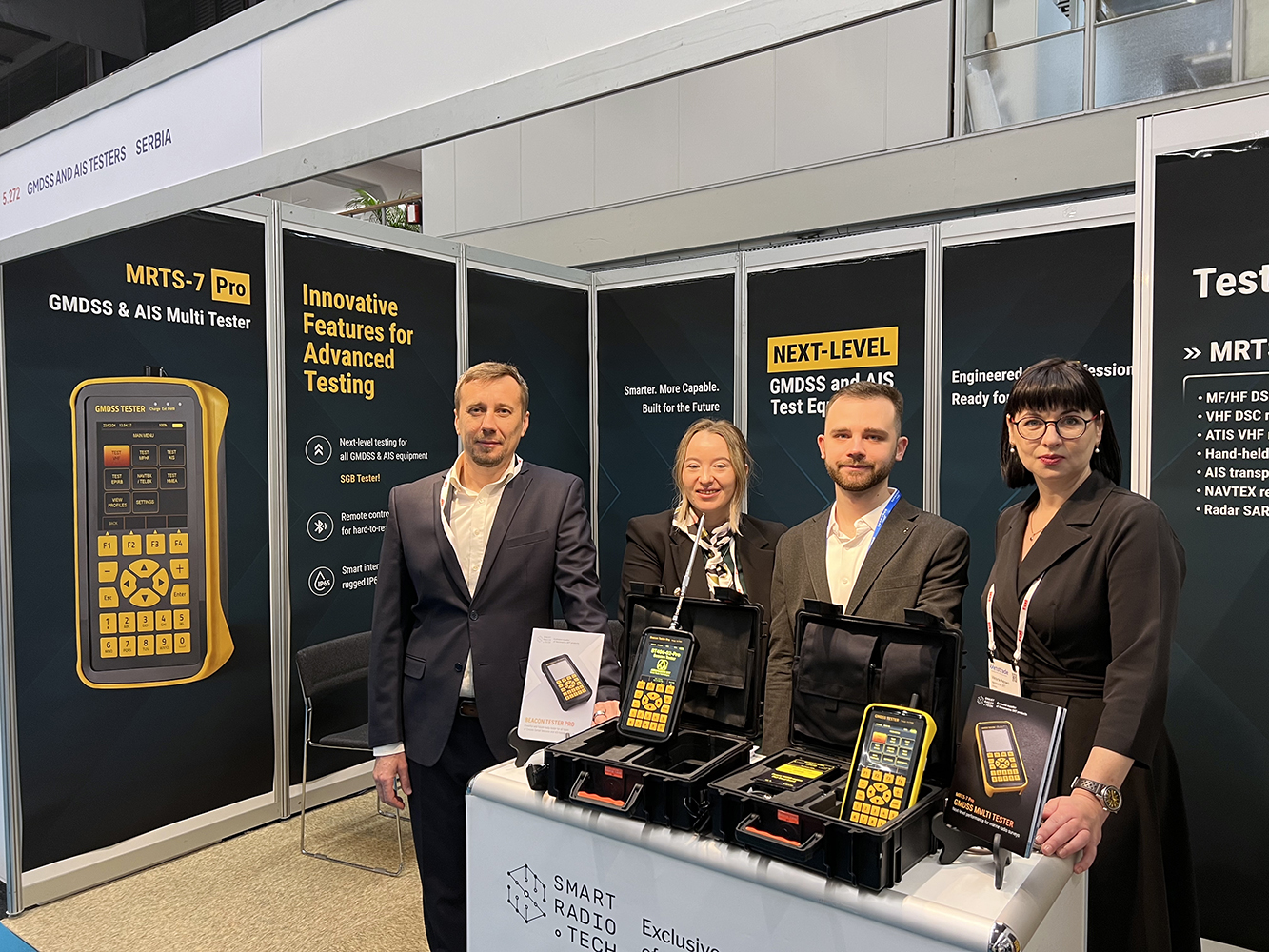
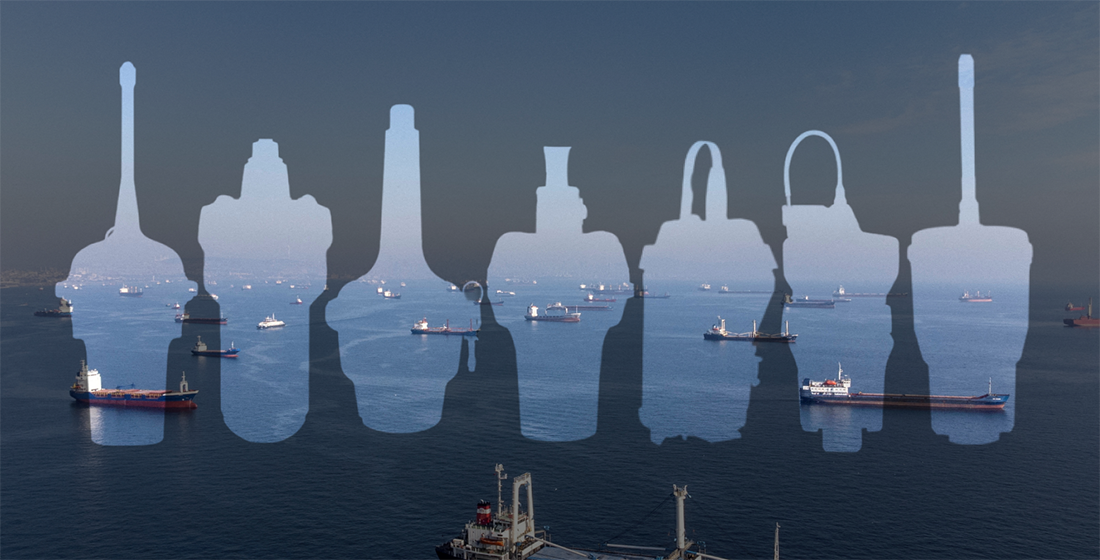
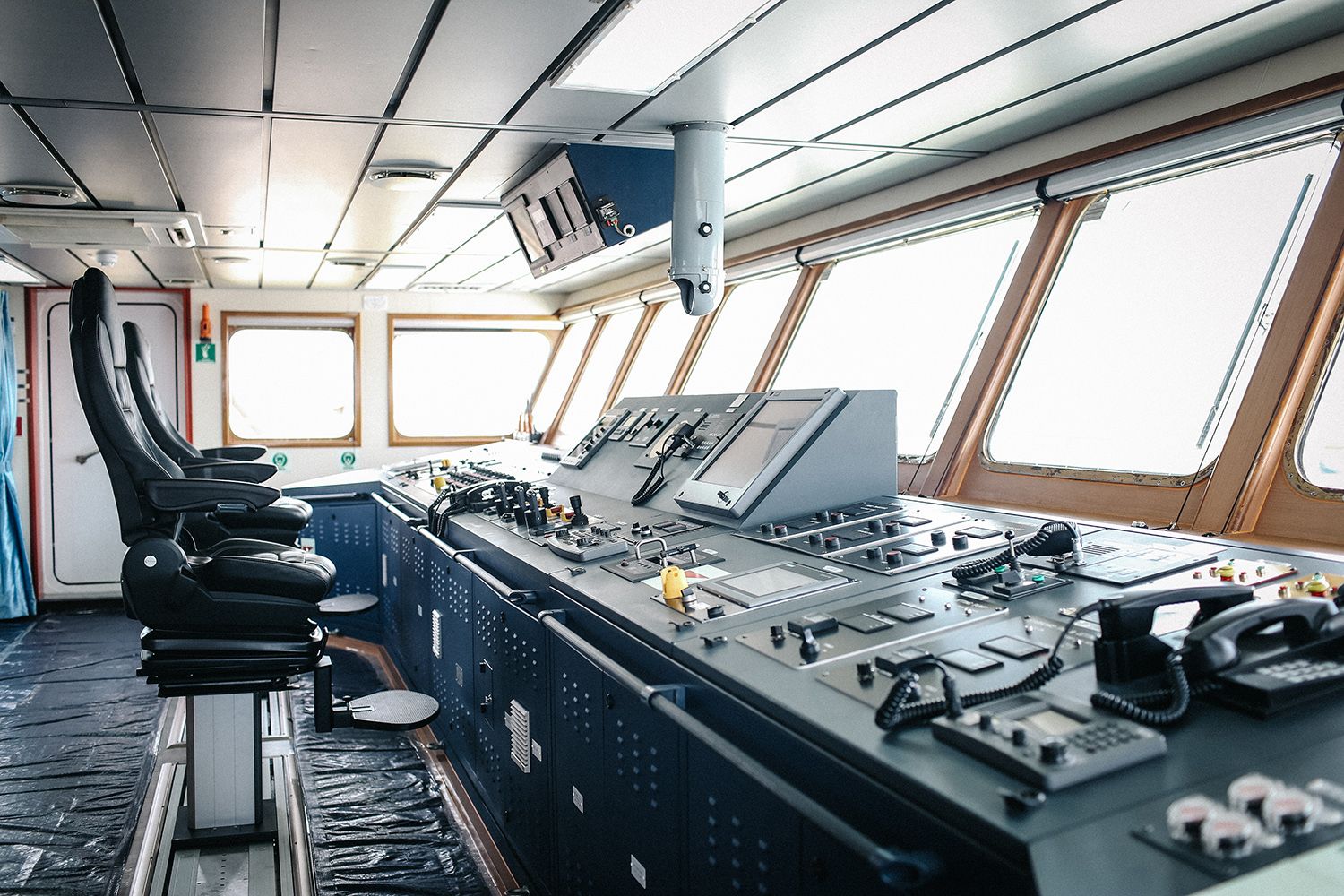

Be the first to comment